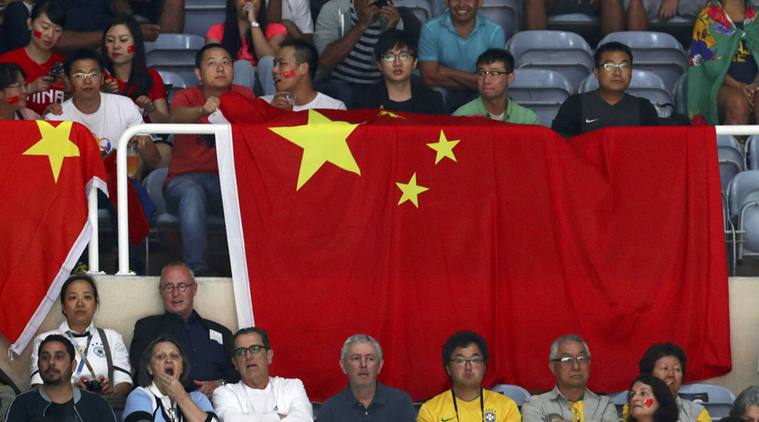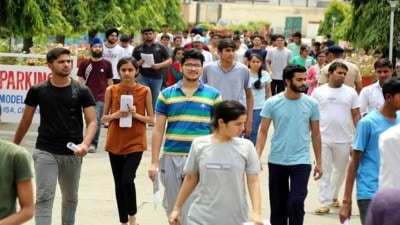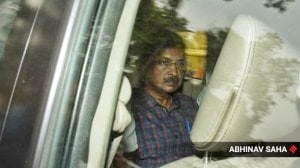- India
- International
Raja Mandala: From Tiananmen to digital dystopia
Rise of the all-knowing surveillance state has reinforced Deng Xiaoping’s model of open economy and closed polity in China.
 Some analysts of China were convinced that the contradictions of “red capitalism” — a communist party building capitalism — will inevitably undermine CCP rule. (Reuters)
Some analysts of China were convinced that the contradictions of “red capitalism” — a communist party building capitalism — will inevitably undermine CCP rule. (Reuters)
Three decades ago this week, the Chinese Communist Party cracked down hard on student protests demanding the liberalisation of China’s political system. The movement that began on a small scale in the early summer of 1989 in Beijing’s Tiananmen Square spread rapidly to many towns and cities and gained significant popular support. During the night of June 3-4, troops of the People’s Liberation Army fought their way into the heart of Beijing against civilian resistance and cleared the square of thousands of citizens who gathered there.
The bloody crackdown at Tiananmen remains a deep and unhealed scar in the evolution of modern China and the reign of the Chinese Communist Party (CCP) that began seven decades ago in 1949. The CCP, under the leadership of the supreme leader, Deng Xiaoping, characterised the protests as a counter revolutionary rebellion, ousted the party secretary Zhao Ziyang and other communist leaders seen as empathetic to the students, and unleashed a wave of political repression.
The Tiananmen protests have endured as a powerful symbol of the popular struggles for political liberalisation and the capacity of authoritarian rulers to crush them. Nothing captures this enduring tension more than the image of the “tank man” — a lone citizen trying to stop a column of tanks in the Tiananmen Square on the morning of June 5. Over the last three decades, that balance appears to have shifted in favour of the state, at least for now.
Accelerating that shift has been the revolution in digital technologies that has allowed states to exercise unprecedented control over their citizens. There seems to be less and less need to deploy massive numbers of troops and tanks to put down large-scale protests as the CCP had to do in June 1989. New technological systems based on mass surveillance, data analytics and artificial intelligence are helping modern authoritarians to prevent the emergence of not just large-scale protests, but stamp out individual dissent. But back to Tiananmen for a moment.
Chairman Deng leavened China’s political repression that followed after the Tiananmen protests with a counter-intuitive initiative. He unleashed a massive economic reform in 1992. Deng blocked the CCP’s return to ideological conservatism by decisively shifting China’s economic orientation to liberalisation and globalisation. Deng’s strategy limited the international opprobrium that followed the Tiananmen crackdown. It opened up expansive possibilities for Western capital in China and renewed political engagement with the US, Europe and Japan.

Deng’s 1992 reforms put China on the path to rapid economic growth. A decade later, China was on its way to becoming the second-largest economy in the world and well on track to overtake the United States. Deng’s strategy seemed to offer Chinese citizens a new compact — economic prosperity in return for political obedience. Rapid economic growth over a prolonged period, to be sure, triggered social turbulence and political discontent.
Some analysts of China were convinced that the contradictions of “red capitalism” — a communist party building capitalism — will inevitably undermine CCP rule. Others hoped that economic prosperity will generate a middle class that will seek greater freedoms and the state in China, as elsewhere in East Asia, will slowly but certainly evolve towards liberalism.
Both would be disappointed as the CCP rule looked far more resilient and stable than anyone had anticipated. One reason, arguably, is the new means of control that the party had acquired. The post-Tiananmen era in China had a third element that reinforced Deng’s model of “open economy and closed polity” — the rise of the all-knowing surveillance state with enormous potential for digital repression.
A quarter century ago, the internet era was heralded with the hope of expanded freedoms — individual and collective. Instead, it opened the door for unprecedented state control over citizenry. No other nation has demonstrated the new possibilities for digital control of society as China has in the last few years.
Beijing employed a number of means — including the erection of a “great wall” of censorship over the internet, monitoring of the physical movement of individuals through omnipresent surveillance cameras, analysing the digital activity of individuals and investment in technologies such as facial recognition. The construction of the surveillance state in China, many believe, rules out any protest movement of the kind we saw at Tiananmen three decades ago.
The Chinese-model of mass surveillance is now being exported to countries in Asia, Africa and Latin America. It is, therefore, tempting to frame the debate in terms of authoritarian versus democratic states. But caution is in order. The rise of the “surveillance state” in China and other states has its version in the democratic world — the rise of “surveillance capitalism”. US technology giants, for example, have been accused of collection, manipulation and monetisation of consumer data. Some of them have also been charged with facilitating the rise of the surveillance state in China and its global diffusion.
However, there is a difference. In most democracies, there is a big push back against surveillance capitalism and the search for means to protect individuals and communities against corporate greed and state repression in the digital age. But we are at the very beginning of a challenging project to prevent the emergence of a digital dystopia.
The writer is director, Institute of South Asian Studies, National University of Singapore and contributing editor on international affairs for The Indian Express
40 Years Ago
EXPRESS OPINION
More Explained
Apr 18: Latest News
- 01
- 02
- 03
- 04
- 05









































